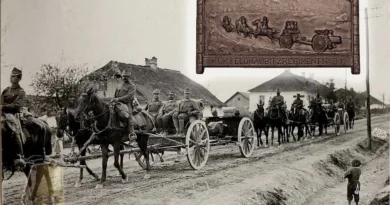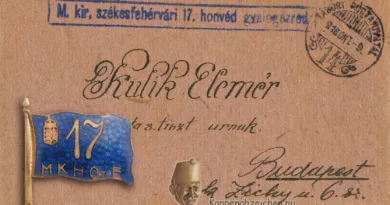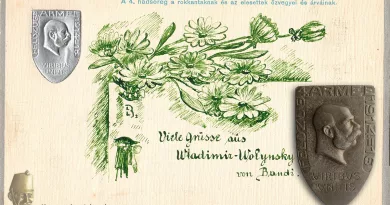IR 32 part 2.
The 32nd Infantry Regiment was the home regiment of Budapest. I have written about the namesake Maria Theresa and the slogan of the regiment before. This will now be about the regiment’s lapel color and the Arkanzas company flag badge.
The Monarchy’s regiments were distinguished by three spectacular elements of clothing. On the collar of the uniform lapel appliqués of different colors were sewn. The stars of ranking were also fixed on them. The cuff of the jacket was the same color. However, too many colors would have been needed to distinguish the 102nd Infantry Regiment. Therefore, the color of the buttons sewn on the tunic was the second distinguishing element. The gold-colored (yellowish) or silver-plated (white-metal) buttons had to be used by the regiments. This method made it possible to halve the number of lapel colors. The third halving point was given by the pants. The infantry regiments recruited from the territory of the Kingdom of Hungary wore so-called Hungarian trousers. On top of this on the front side, knight braids were sewn on both trouser legs. Regiments from the rest of the Monarchy had smooth, unadorned trousers.

A total of 28 different colors were used, but as the number of Hungarian regiments was less than that of the regiments recruited in the hereditary provinces, 10 of the theoretically possible 112 variations were not utilized. The lapel color of the 32nd Infantry Regiment was sky blue, with yellow buttons and, of course, the Hungarian trousers. The 4th Infantry Regiment was equipped with the same colors and smooth pants. The lapel color was sky blue, and the 19th (Hungarian) and 3rd (Austrian) Infantry Regiments received white (silver) buttons.

The Arkanzas company produced flag badges to distinguish troops. These flags had the same badge body, but their numbering and enameling differed. The numbering was done according to the number of the different regiments, the coloring was done according to the lapel colors of the regiments. Even the color of the buttons could be shown on the badges, as the silver buttons were marked with the silvered number on the badges, but the flagpole was also silver-plated by the manufacturer. Although this silvering has mostly worn off over time, many specimens still remained. Analysis of these proved that the badges of the regiments using the white button were silvered by the manufacturer. The first 12 serial numbers in the series are all there. However, with a few exceptions, only the numbers of the Hungarian regiments are included in the higher serial numbers. So the series is not complete.

In this post, I present the two insignia of the 32nd Regiment. As you can see, in addition to the lighter color, a dark blue enamel badge was also made, which doesn’t exactly match the lapel color. It is common for different series of flag badges to be made in different shades. The slight differences in shade may have been caused by the different proportions of the dye used to color the enamel. But the 29th Infantry Regiment, for example, is known for four very different colored blue and green badges. The coloring is completely different, but also for the two badges presented here. The reason for this discrepancy is unknown. The entry is complemented by a field postcard decorated with the regiment’s flag badge. The knight braids on the trousers can be clearly seen on the chap of the 32nd Infantry Regiment’s monument in Budapest.




